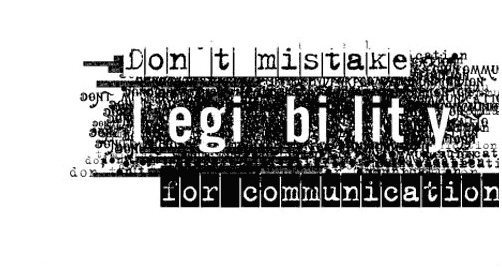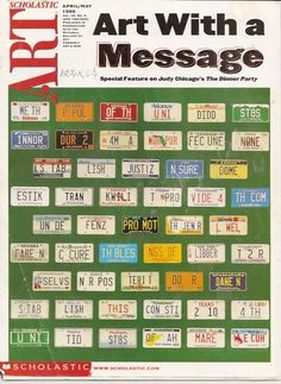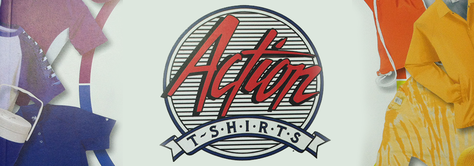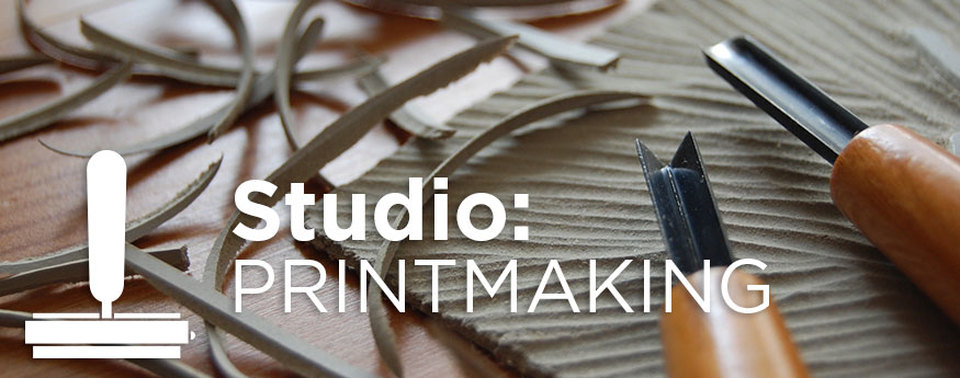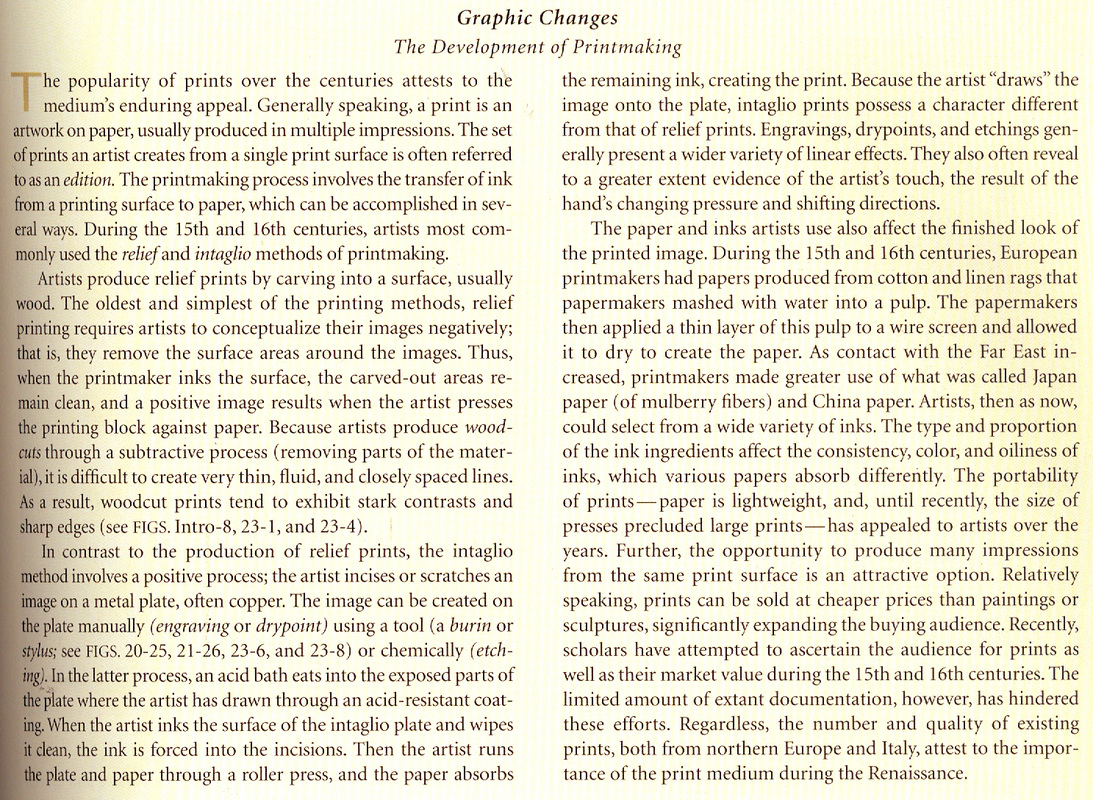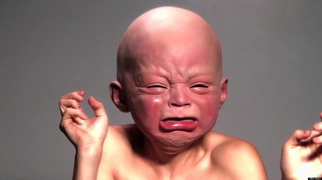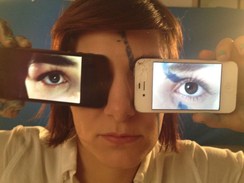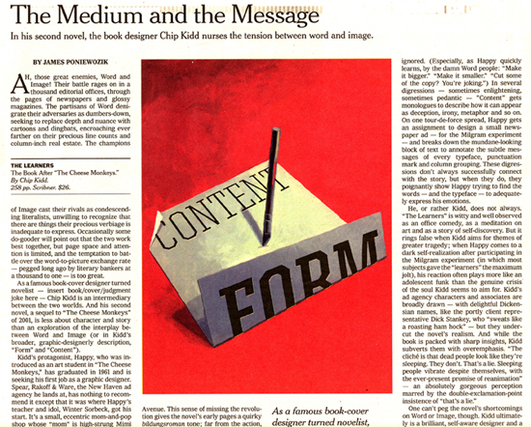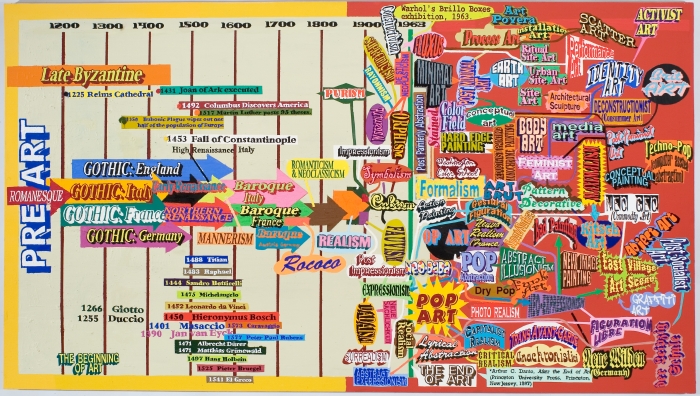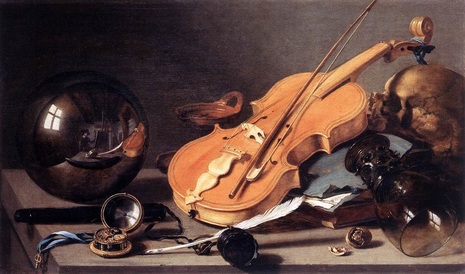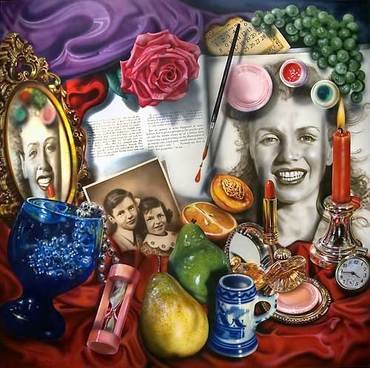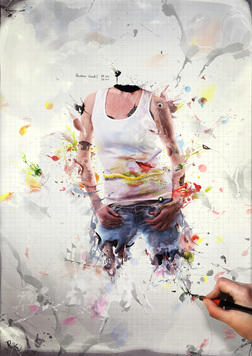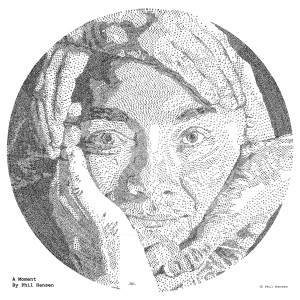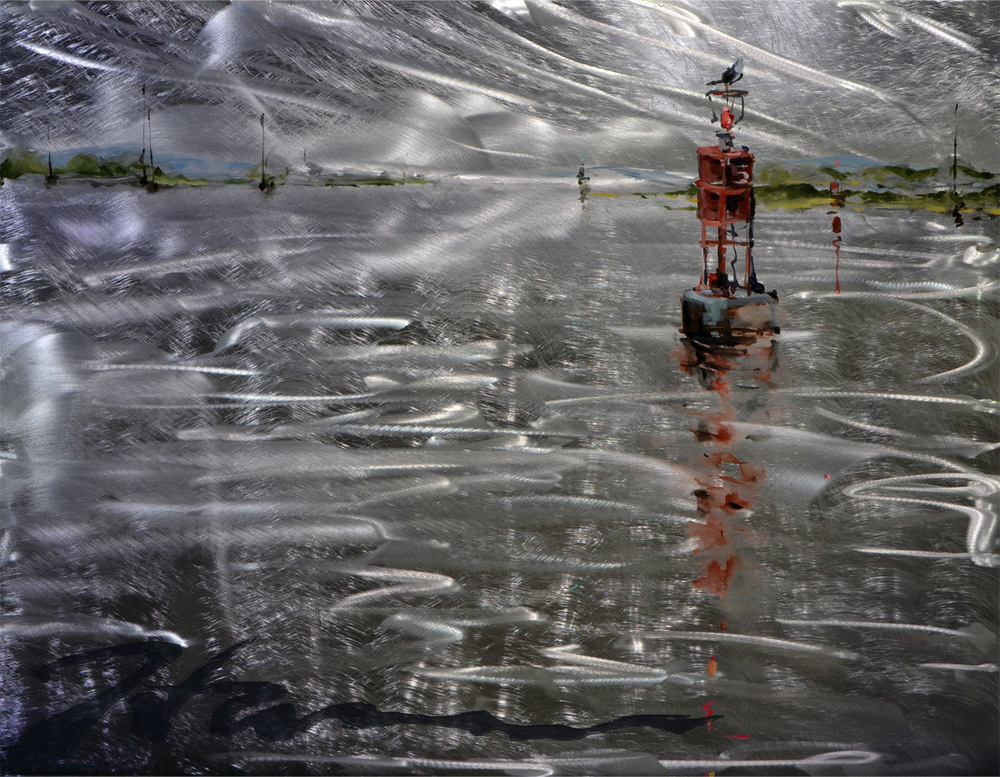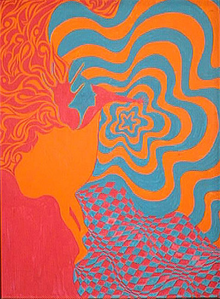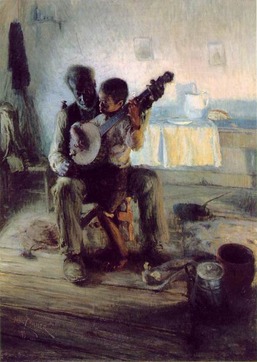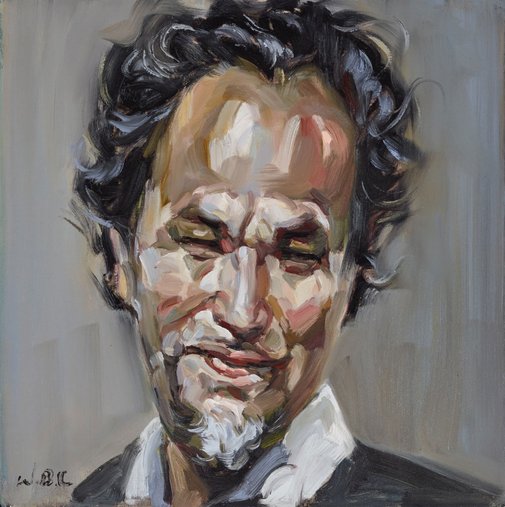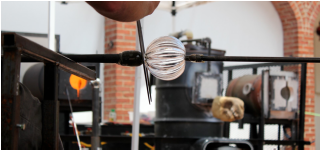FOURTH NINE WEEKS
Week 1
MON 4/11 - Final Slides + Process Portfolio
WED 4/13 - Process Portfolio + Growth Chart
FRI 4/15 - Final Critique
WED 4/13 - Process Portfolio + Growth Chart
FRI 4/15 - Final Critique
Week 2
|
TUE 4/19
ARTIST RESEARCH CRITICAL JOURNAL INVESTIGATIONS: (Include notes & sketches in response to artist's work - elaborate on specific examples) - 1+ pages
PROJECT PLANNING
CONCEPTUAL JOURNAL INVESTIGATIONS: Your List...(16-20 things you have learned in your life so far) + sketches or printed pictures - 1 page Sagmeister's List of "Things I have learned in my life so far"
|
Your List...(7-10 rules for life and design happiness) + sketches or printed pictures - 1 page
Sagmesiter's List of "7 Rules for life and design happiness"
|
|
THU 4/22
ARTIST RESEARCH JOURNAL INVESTIGATIONS: (Include notes, direct quotes, & sketches in response to these artists' works/philosophies) - 1+ pages
|
Week 3
MON 4/25
PROJECT PLANNING
JOURNAL INVESTIGATIONS: Revisit your list...Choose 1 of your own philosophies and dedicate 2+ pages to explain & plan visuals
PROJECT PLANNING
JOURNAL INVESTIGATIONS: Revisit your list...Choose 1 of your own philosophies and dedicate 2+ pages to explain & plan visuals
- How have you discovered this in your life? Be specific. Take yourself back to individual moments when this statement was extremely relevant. Elaborate on the details surrounding these circumstances.
- Take the most meaningful words from your philosophy and start connecting symbols and visuals that reveal aspects from your personal stories. Try rewriting these words in a way that integrates them with these symbols you chose. Work through the most obvious solutions and then get to the more creative and thought-provoking.
|
WED 4/27
COMPARATIVE JOURNAL INVESTIGATIONS: Choose 2 or more artists to compare, citing 2 or more Scholastic Arts Magazines. Add 1 or more hyperlinks visited for research supporting this investigation. Include 1 or more artist quotes. Create 2 new Google Slides on your Process Portfolio with this information. Include headings and balance both text and visuals!! Some artists dealing with MESSAGES in their work include: Joshua Abelow Chila Kumari Burman Judy Chicago Jenny Holzer Barbara Kruger Robert Indiana Kerry James Marshall Annette Messager Keith Piper Ed Ruscha Ai Weiwei |
FRI 4/29
CONCEPTUAL JOURNAL INVESTIGATIONS: Final Project Planning On Location! This is a site-specific installation. You must consider how your project can transform that space and how your message will impact a particular viewing audience.
CONCEPTUAL JOURNAL INVESTIGATIONS: Final Project Planning On Location! This is a site-specific installation. You must consider how your project can transform that space and how your message will impact a particular viewing audience.
Week 4 - 7
MON 5/23 - Continue progress on CON~Text Project
WED 5/24 - Continue progress on CON~Text Project
FRI 5/25 - Install CON~Text Project - Complete Final Portfolio & Process Portfolio Slides
WED 5/24 - Continue progress on CON~Text Project
FRI 5/25 - Install CON~Text Project - Complete Final Portfolio & Process Portfolio Slides
Week 8
WED - Critique
FRI - Artist Statements - Planning questions - Create a new Google Doc to begin an outline today
FRI - Artist Statements - Planning questions - Create a new Google Doc to begin an outline today
Week 9
TUE - Work in class to complete Artist Statements (300-400 words total) and Process Portfolio Slides: Complete 2 new slides outlining the direction of your first summer assignment. The slides must include the following items: planning connected to WHAT you are going to do, research relating to HOW you are going to do it, and an explanation of WHY this is relevant to the ideas addressed in your Artist Statement. These will be due on Exam day to present to the class for feedback.
THU - Artist Statements Due by the end of class!!
THU - Artist Statements Due by the end of class!!
FINAL EXAM
MON 6/13 - Present 2 Process Portfolio Slides
GRADING CRITERIA
Part I: Artist Statement
CONTENT/IDEAS (Score_____ / 5 x 4pts = _____/20pts total)
1 - Writing is extremely limited in communicating knowledge, with no central theme
2 - Writing does not clearly communicate knowledge. The reader is left with questions.
3 - Writes related, quality paragraphs, with little or no details.
4 - Writing is purposeful and focused. Piece contains some details.
5 - Writing is confident and clearly focused. It holds the reader’s attention. Relevant details enrich writing.
ORGANIZATION (Score_____ / 5 x 4pts = _____/20pts total)
1 - Writing is disorganized and underdeveloped with no transitions or closure.
2 - Writing is brief and underdeveloped with very weak transitions and closure.
3 - Writing is confused and loosely organized. Transitions are weak and closure is ineffective.
4 - Uses correct writing format. Incorporates a coherent closure.
5 - Writing includes a strong beginning, middle, and end, with clear transitions and a focused closure
WORD CHOICE & SENTENCE STRUCTURE (Score_____ / 5 x 4pts = _____/20pts total)
1 - Careless or inaccurate word choice, which obscures meaning. Frequent run-ons or fragments with no variety in sentence structure.
2 - Shows some use of varied word choice. Some run-ons or fragments and little variety in sentence structure.
3 - Uses a variety of word choice to make writing interesting. Use simple, compound, and complex sentences.
4 - Purposeful use of word choice. Frequent and varied sentence structure.
5 - Effective and engaging use of word choice. Consistent variety of sentence structure throughout.
Part II: Summer Project Proposal
SLIDE 1 (Score_____/ 20pts) +SLIDE 2(Score_____/ 20pts) = ______/40pts total
A. Two or more Investigations (5pts): Conceptual, Media, Critical, and/or Contextual
B. Visual Presentation (5pts)
GRADING CRITERIA
Part I: Artist Statement
CONTENT/IDEAS (Score_____ / 5 x 4pts = _____/20pts total)
1 - Writing is extremely limited in communicating knowledge, with no central theme
2 - Writing does not clearly communicate knowledge. The reader is left with questions.
3 - Writes related, quality paragraphs, with little or no details.
4 - Writing is purposeful and focused. Piece contains some details.
5 - Writing is confident and clearly focused. It holds the reader’s attention. Relevant details enrich writing.
ORGANIZATION (Score_____ / 5 x 4pts = _____/20pts total)
1 - Writing is disorganized and underdeveloped with no transitions or closure.
2 - Writing is brief and underdeveloped with very weak transitions and closure.
3 - Writing is confused and loosely organized. Transitions are weak and closure is ineffective.
4 - Uses correct writing format. Incorporates a coherent closure.
5 - Writing includes a strong beginning, middle, and end, with clear transitions and a focused closure
WORD CHOICE & SENTENCE STRUCTURE (Score_____ / 5 x 4pts = _____/20pts total)
1 - Careless or inaccurate word choice, which obscures meaning. Frequent run-ons or fragments with no variety in sentence structure.
2 - Shows some use of varied word choice. Some run-ons or fragments and little variety in sentence structure.
3 - Uses a variety of word choice to make writing interesting. Use simple, compound, and complex sentences.
4 - Purposeful use of word choice. Frequent and varied sentence structure.
5 - Effective and engaging use of word choice. Consistent variety of sentence structure throughout.
Part II: Summer Project Proposal
SLIDE 1 (Score_____/ 20pts) +SLIDE 2(Score_____/ 20pts) = ______/40pts total
A. Two or more Investigations (5pts): Conceptual, Media, Critical, and/or Contextual
B. Visual Presentation (5pts)
- Highly effective balance of text and imagery
- Clear, legible and organized layout
- Confident and coherent articulation of ideas
- Meaningful and insightful reflections
- Accurate and appropriate use of subject-specific language
- Each slide has a unique heading, image captions, and citations
THIRD NINE WEEKS
Week 1
TUE 2/9 - HOMEWORK: Review Your Final Portfolio Slides and choose one Theme (IB Handbook p.9) to write about in your Journal that brings these pieces together. This Theme will be a starting point for planning your printmaking project.
THU 2/11 - HOMEWORK: In your Journal, answer the following question about your printmaking project - What is my work about and what is it's function? Select one or more Cultural Values (IB Handbook p. 17) to discuss the purpose and direction of your final piece.
THU 2/11 - HOMEWORK: In your Journal, answer the following question about your printmaking project - What is my work about and what is it's function? Select one or more Cultural Values (IB Handbook p. 17) to discuss the purpose and direction of your final piece.
Week 2
TUE 2/17 - SNOW DAY
THU 2/18 - HOMEWORK: Explore Printmaking Processes and Techniques in a two-page spread in your Journal. Balance visuals and text! Consider Including the following:
Visuals:
Vocabulary Terms:artist's proof, baren (Japanese hand tool for printmaking), brayer, collagraph, composition, contour, drawing from observation, edition, engraving, incised, ink, intaglio, lithograph, monoprint, monotype, multiple, negative space, numbering, plate, Plexiglas, positive area, pressure, print, printing press, process proof, Pronto Plate, pulling a print, registration, relief, reverse image, serigraph, silkscreen, stencil, Styrofoam, surface, techniques, template, texture, transfer, woodcut
Useful Research Links: http://www.artshow.com/resources/printmaking.html
What is a Print? http://www.moma.org/interactives/projects/2001/whatisaprint/flash.html
Video Tutorials: Relief/ Block prints/ Woodcuts/ Screen prints/ Lithography/ Etching/Collagraph/ Intaglio/ Planographic/ Chine Colle/ Monoprints
Prinmaking Examples:
http://www.metmuseum.org/toah/hd/ukiy/hd_ukiy.htm)
http://www.vam.ac.uk/content/articles/i/indian-textiles-introduction/
http://www.bbc.co.uk/education/clips/z4mc87h
http://www.metmuseum.org/toah/hd/ukiy/hd_ukiy.htm
http://www.vam.ac.uk/content/articles/i/indian-textiles-introduction/
https://www.youtube.com/playlist?list=PLD1240D899F3875A4
http://www.moma.org/visit/calendar/exhibitions/1103
http://www.christies.com/matisse/printmaker.aspx
Indian Block prints in Rajasthan
African Block Print designs
Sarah Amos: Fabric Collograph Printmaker - About Mark Making
THU 2/18 - ART GUILD
THU 2/18 - HOMEWORK: Explore Printmaking Processes and Techniques in a two-page spread in your Journal. Balance visuals and text! Consider Including the following:
Visuals:
- Paste in actual print experiments, both relief and intaglio examples.
- Take photos of your printing plates and tools used and paste these into your journal.
- Define the methods of printmaking, key concepts, tools and safety.
- Explain what you discovered in your experiments including what you learned about the process from creating the plate to applying the ink and transferring it to another surface.
- Explain how you took risks, found merit in mistakes and errors, and learned through failure. It is important to highlight not only what worked, but what didn't work.
Vocabulary Terms:artist's proof, baren (Japanese hand tool for printmaking), brayer, collagraph, composition, contour, drawing from observation, edition, engraving, incised, ink, intaglio, lithograph, monoprint, monotype, multiple, negative space, numbering, plate, Plexiglas, positive area, pressure, print, printing press, process proof, Pronto Plate, pulling a print, registration, relief, reverse image, serigraph, silkscreen, stencil, Styrofoam, surface, techniques, template, texture, transfer, woodcut
Useful Research Links: http://www.artshow.com/resources/printmaking.html
What is a Print? http://www.moma.org/interactives/projects/2001/whatisaprint/flash.html
Video Tutorials: Relief/ Block prints/ Woodcuts/ Screen prints/ Lithography/ Etching/Collagraph/ Intaglio/ Planographic/ Chine Colle/ Monoprints
Prinmaking Examples:
http://www.metmuseum.org/toah/hd/ukiy/hd_ukiy.htm)
http://www.vam.ac.uk/content/articles/i/indian-textiles-introduction/
http://www.bbc.co.uk/education/clips/z4mc87h
http://www.metmuseum.org/toah/hd/ukiy/hd_ukiy.htm
http://www.vam.ac.uk/content/articles/i/indian-textiles-introduction/
https://www.youtube.com/playlist?list=PLD1240D899F3875A4
http://www.moma.org/visit/calendar/exhibitions/1103
http://www.christies.com/matisse/printmaker.aspx
Indian Block prints in Rajasthan
African Block Print designs
Sarah Amos: Fabric Collograph Printmaker - About Mark Making
THU 2/18 - ART GUILD
|
SATURDAY 2/20 @ 10am - 1pm
STUDIO VISIT!!!! Eric Helm @ Action T-Shirts 2926 W. Marshall St. Richmond, VA 23230 The screen printing shop is a block from the corner of Broad St. and Boulevard, in Scotts Addition. Parking is directly across the street. |
Week 3
MON 2/22 - HOMEWORK: Complete one or more Journal pages, which involve the Contextual Investigations below
What are the qualities of a fine-art print?
How did the invention of the printing press affect communication?
What are various ways in which printmaking affects society?
How did changes in technology affect the art print?
How did twentieth-century artists use printmaking differently than their predecessors?
How do contemporary artists use printmaking differently than their predecessors?
How do contemporary artists use print today?
How do art printmaking and mass media affect each other?
What are the qualities of a fine-art print?
How did the invention of the printing press affect communication?
What are various ways in which printmaking affects society?
How did changes in technology affect the art print?
How did twentieth-century artists use printmaking differently than their predecessors?
How do contemporary artists use printmaking differently than their predecessors?
How do contemporary artists use print today?
How do art printmaking and mass media affect each other?
Source: Garner's Art Through the Ages (p. 569)
Making Multiples
One of the advantages of printmaking is the possibility of creating multiples. You can try out different approaches, different surfaces, hand-coloring, collage and working back into the print. There is less of a sense of "preciousness" and this helps us to be more experimental. However, a successful print begins with the integrity of the initial image, whether it is a drawing or photograph. Choosing a subject with a certain visual complexity can make you work more interesting. Your final printmaking project must fit an overall concept, driven by what you have or have not yet explored in your current portfolio. We will begin looking at possibilities for the printmaking process, then we will dive in to the purpose and overall meaning for your final portfolio piece.
Final Print Series
We will ultimately be printing at least three versions of a single plate, negative, or file. The prints can be made on a single surface or multiple surfaces that are brought together for the final arrangement. Each print should be unique, but all versions must work together as a whole, and not just as three different variations of the exact same print (this is the basic level of printmaking, and we are moving beyond that). The printed image or design does not have to be dominant; it can take up a very small portion of the overall layout. It can be subdued in the background or around the edge, like a pattern or border. The print can change orientation, be cropped differently each time, or overlap. Think about how you can create a thoughtful progression from one design to the next. For instance, you could progressively work the design from minimal to more complex, either on the printed plate, or by adding outside materials. Work to your strengths in combining other media. The print itself can be just a single layer of a more complex drawing, painting, collage, etc. You can also choose to make multiple printing plates, film negatives, and/or digital files for a complete series, however the imagery must be brand new and carried out with a specific purpose. The printed design will act as a single element of repetition, but you should aim to include as much variation within the work as possible. This is why we are avoiding three identical prints with different colors - this is not pushing the potential of the medium. Take it another step further!!
Printmaking Methods
You may choose any mode of printmaking for this assignment, and I will be providing you with any resources and assistance for each approach. I strongly recommend that you work closely with your classmates that are attempting the same method. Your choice does not have to be based on experience, but use your current knowledge to your advantage. The process you choose should support you initial design and fit the overall visual affect you desire to achieve.
One of the advantages of printmaking is the possibility of creating multiples. You can try out different approaches, different surfaces, hand-coloring, collage and working back into the print. There is less of a sense of "preciousness" and this helps us to be more experimental. However, a successful print begins with the integrity of the initial image, whether it is a drawing or photograph. Choosing a subject with a certain visual complexity can make you work more interesting. Your final printmaking project must fit an overall concept, driven by what you have or have not yet explored in your current portfolio. We will begin looking at possibilities for the printmaking process, then we will dive in to the purpose and overall meaning for your final portfolio piece.
Final Print Series
We will ultimately be printing at least three versions of a single plate, negative, or file. The prints can be made on a single surface or multiple surfaces that are brought together for the final arrangement. Each print should be unique, but all versions must work together as a whole, and not just as three different variations of the exact same print (this is the basic level of printmaking, and we are moving beyond that). The printed image or design does not have to be dominant; it can take up a very small portion of the overall layout. It can be subdued in the background or around the edge, like a pattern or border. The print can change orientation, be cropped differently each time, or overlap. Think about how you can create a thoughtful progression from one design to the next. For instance, you could progressively work the design from minimal to more complex, either on the printed plate, or by adding outside materials. Work to your strengths in combining other media. The print itself can be just a single layer of a more complex drawing, painting, collage, etc. You can also choose to make multiple printing plates, film negatives, and/or digital files for a complete series, however the imagery must be brand new and carried out with a specific purpose. The printed design will act as a single element of repetition, but you should aim to include as much variation within the work as possible. This is why we are avoiding three identical prints with different colors - this is not pushing the potential of the medium. Take it another step further!!
Printmaking Methods
You may choose any mode of printmaking for this assignment, and I will be providing you with any resources and assistance for each approach. I strongly recommend that you work closely with your classmates that are attempting the same method. Your choice does not have to be based on experience, but use your current knowledge to your advantage. The process you choose should support you initial design and fit the overall visual affect you desire to achieve.
PREPARE FINAL PORTFOLIO SLIDES
Your In-Class & At-Home Projects will be photographed and file will be placed in your Google Drive folder to complete your slides
Slide 1 - In-Class Project - Image (from Drive) + Title + Month/Year + Media (ALL materials used) + Dimensions (Centimeters = IN. x 2.54)
+ Exhibition Text: 500 characters with spaces (4-6 sentences)
Slide 2 - At-Home Project -Image (from Drive) + Title + Month/Year + Media (ALL materials used) + Dimensions (Centimeters = IN. x 2.54) + Exhibition Text: 500 characters with spaces (4-6 sentences)
Writing exhibition text: For each artwork you submit, it should be supported by exhibition text that outlines the original intentions of the work (500 characters maximum—including spaces—per artwork). The text should explain your approach to the project, and should reference any sources that have influenced the individual piece. When completed, this information will be printed out and included in your exhibition to help your audience appreciate your work more fully. Mounting printed exhibition text on foam core board will give your exhibition a professional fee!
Your In-Class & At-Home Projects will be photographed and file will be placed in your Google Drive folder to complete your slides
Slide 1 - In-Class Project - Image (from Drive) + Title + Month/Year + Media (ALL materials used) + Dimensions (Centimeters = IN. x 2.54)
+ Exhibition Text: 500 characters with spaces (4-6 sentences)
Slide 2 - At-Home Project -Image (from Drive) + Title + Month/Year + Media (ALL materials used) + Dimensions (Centimeters = IN. x 2.54) + Exhibition Text: 500 characters with spaces (4-6 sentences)
Writing exhibition text: For each artwork you submit, it should be supported by exhibition text that outlines the original intentions of the work (500 characters maximum—including spaces—per artwork). The text should explain your approach to the project, and should reference any sources that have influenced the individual piece. When completed, this information will be printed out and included in your exhibition to help your audience appreciate your work more fully. Mounting printed exhibition text on foam core board will give your exhibition a professional fee!
SECOND NINE WEEKS
Week 1
MON 11/9 - Finish Final Critique Slides
WED 11/11- Introduction to Performance Art
WED 11/11- Introduction to Performance Art
JILLIAN MAYER
I Am Your Grandma is an autobiographical video diary log that Mayer records for her unborn grandchildren. By placing the video in a public forum (YouTube) she conducts a phenomenological study of why people ultimately share their personal feelings with anonymous strangers, and whether this sharing effects the actual emotional significance of the piece. The work challenges notions of self perception of mortality, celebrity, even the universal impetus for creation and legacy. At the same time, the packaging of the work as a viral-friendly video, complete with a young female protagonist, catchy song, and short duration creates metaphysical questions of artifice and reality.
While brainstorming your own social media presence you will answer:
Other Videos by Jillian Mayer: Mega Mega Upload
- Can you describe the subject matter?
- What could have been the message?
- What characters did main subject transform into?
- How does the artist use herself to comment on the use of social media?
While brainstorming your own social media presence you will answer:
- Which social media platforms am I active on?
- How do I portray myself through those platforms?
- Am I conscious of what I post? How so?
- What do I usually write/post? Respond to? Message back? Like? Favorite?
- Who do I follow?
- Do I use a different voice on these platforms? A different language?
- Am I curating my online profile? Am I using mostly images, videos, or other sources?
Other Videos by Jillian Mayer: Mega Mega Upload
IMPROV ACTIVITY
Gather in a circle and act out improvisational responses using your bodies. Each round consists of 10-15 second narrative. It could be verbal/physical/dramatic/stagnant. The next student will create an improved response piece.
JOURNAL ASSIGNMENT
“The Meaning of the Selfie” by James Franco
OTHER QUESTIONS TO CONSIDER:
KEY TERMS:
FRI 11/13
Artist Video Examples:
Wrecking Ball By Joseph Patrick Carney
The Thrill of the Fight By Samantha Correa
Le Ambivalent By Anna Talley
Introduction to Filming:
How to Shoot Video with Canon 60D
Camera Terms:
JOURNAL ASSIGNMENT:
Brainstorm a script and scene for your character(s):
Gather in a circle and act out improvisational responses using your bodies. Each round consists of 10-15 second narrative. It could be verbal/physical/dramatic/stagnant. The next student will create an improved response piece.
JOURNAL ASSIGNMENT
- Brainstorm 4 characters that express variations of your online identity. Look for characteristics that may feed into scripts.
- Come up with 7-10 phrases or quotes that would come out from your characters. Extend their personalities, have them be an extension of your personality/identity while creating their own.
“The Meaning of the Selfie” by James Franco
- Can celebrities be performance artists?
- What about the “selfie” attracts followers?
- How does James Franco curate his profile?
- What other celebrities do you think curate their social media profiles? Why?
OTHER QUESTIONS TO CONSIDER:
- How is your online presence different from your identity in real life?
- How is your identity different on multiple online platforms?
- How do you expose your identity to your followers?
- Can you construct your own identity online?
KEY TERMS:
- Identity: the fact of being who or what a person or thing is
- Social Media: websites and applications that enable users to create and share
(Facebook, Instagram, Vine, Twitter, Tumblr) - Performance Art: an art form that combines visual art with dramatic performance
- Privacy: the state or condition of being free from being observed or disturbed by other people
- Avatar: an icon or figure representing a particular person in computer games, Internet forums, etc.
FRI 11/13
Artist Video Examples:
Wrecking Ball By Joseph Patrick Carney
The Thrill of the Fight By Samantha Correa
Le Ambivalent By Anna Talley
- Does this video seem intentional? If not, why?
- Do you think the backdrop is considered?
- Do you think the song was considered?
- What about his outfit?
- Do you think this is a high quality video?
- Does your video necessarily have to look professionally made?
- Tell students that even though this video does not seem intentional, it was. The location, the song selection, the backdrop, even his outfit was intentional.
- What recording tools do you have access to? Cameras? Computers? Programs? Iphones?
Introduction to Filming:
How to Shoot Video with Canon 60D
- Menu
- Set the dial to Video Mode
- Set lens to Manual Mode
- Movie Exposure: Manual
- Shutter Speed: 1/60
- ISO: Keep ISO as low as possible. range from 100-800 ISO
- Aperture: Low number=blurry background, High number=sharp background
- White Balance: Choose the proper white balance
- To record press Live View button
Camera Terms:
- Frame rate refers to the number of individual frames that comprise each second of video you record, also known as FPS (frames per second.) The most common frame rates in video are 24, 25 and 30 frames per second.
- Shutter speed refers to the amount of time that each individual frame is exposed for. In video, the shutter speed you use will almost always be a fraction of a second. The number used in setting a camera’s shutter speed refers to the denominator of that fraction of a second. For example, if you set your camera’s shutter speed to 60, that means that each frame is being exposed for 1/60th of a second.
- Aperture: How much of your image is in focus. The lower the number the more light will come through the sensor, the higher the number the less light will come through. A low aperture will cause a blurry background and a high aperture will cause a sharp background
- ISO: Camera's sensitivity to light. The higher the number the more light your camera will pick up but also the noisier it will be
JOURNAL ASSIGNMENT:
Brainstorm a script and scene for your character(s):
- Background
- Props
- Costume
- Clothes
- Phrases
- Message
- Tool to record
Week 2
TUE 11/17
Tameka Norris: The Art Assignment - Become Someone Else
ASSIGNMENT:
Open Google drive
Save recorded media onto desktop
We Video - Sign Up for Higher Education Account
Upload media from desktop
(Instructions for completing on You Tube)
Open Youtube
Sign up/Sign In
Go to “Upload”>Click on “Public” to make “Private”
Click on “Select Files to Upload”
Once you have uploaded media, go to “My Channel”>”Videos”>”Video Manager”
On the list to your left select: “Create”>”Video Editor”
HOMEWORK:
Explore two artists (performance or video based) to share by next class with: bio, examples of work, style of video, and concept
Resources:
http://flavorwire.com/227915/10-contemporary-performance-artists-you-should-know
https://www.artsy.net/gene/performance-art
THU 11/19 - Share Research & Continue Planning
PERFORMANCE / VIDEO ARTISTS:
Dandy Punk - The Alchemy of Light
Terence Koh - Traverses a Mound of Salt
Yoko Ono - Cut Piece
Nam June Paik - Electronic Superhighway
Aziz and Cuche - The Time of the Empress
Francis Ayls - When Faith Moves Mountains
Nate Hill - Death Bear
Casey Jane Ellison - Performance Art Meets Comedy
Tameka Norris: The Art Assignment - Become Someone Else
ASSIGNMENT:
Open Google drive
Save recorded media onto desktop
We Video - Sign Up for Higher Education Account
Upload media from desktop
(Instructions for completing on You Tube)
Open Youtube
Sign up/Sign In
Go to “Upload”>Click on “Public” to make “Private”
Click on “Select Files to Upload”
Once you have uploaded media, go to “My Channel”>”Videos”>”Video Manager”
On the list to your left select: “Create”>”Video Editor”
HOMEWORK:
Explore two artists (performance or video based) to share by next class with: bio, examples of work, style of video, and concept
Resources:
http://flavorwire.com/227915/10-contemporary-performance-artists-you-should-know
https://www.artsy.net/gene/performance-art
THU 11/19 - Share Research & Continue Planning
PERFORMANCE / VIDEO ARTISTS:
Dandy Punk - The Alchemy of Light
Terence Koh - Traverses a Mound of Salt
Yoko Ono - Cut Piece
Nam June Paik - Electronic Superhighway
Aziz and Cuche - The Time of the Empress
Francis Ayls - When Faith Moves Mountains
Nate Hill - Death Bear
Casey Jane Ellison - Performance Art Meets Comedy
Week 3
MON 11/23 - Upload and Edit Videos
Week 4
MON 11/30 - Upload and Edit Videos
WED 12/2 - Edit Videos
THU 12/3 ART GUILD
FRI 12/4 - JOURNALS DUE @ 8:30AM - Last day to Edit Videos In Class!
WED 12/2 - Edit Videos
THU 12/3 ART GUILD
FRI 12/4 - JOURNALS DUE @ 8:30AM - Last day to Edit Videos In Class!
Week 5
TUE 12/8 - Prepare Final Critique Slides
How to Export videos From WeVideo:
Slides for Final Critique 1
Slide 1 – Project Intentions (5pts)
Slide 2 – Media Explorations (5pts)
Slide 3 – Artist 1 (5pts)
Slide 4 - Artist 2 (5pts)
Slide 5 - Artist Comparison (5pts)
Slide 6 - Link to your video + Title + Date of Completion
THU 12/10 - Present Videos for final Critique!!
How to Export videos From WeVideo:
- Log into your WeVideo account and go to Timeline
- Click on "Finish" at the top of the page and select "Special Promotion ". A pop up will appear linking to Vimeo, you will need to create a new account through Vimeo
- Once you have signed, click on "Allow"- allow you to link your WeVideo account with Vimeo as a sharing platform
- Go back to you WeVideo page, and FINALLY click on "Finish Video"
- It will take a while to process your video through WeVideo
Slides for Final Critique 1
Slide 1 – Project Intentions (5pts)
Slide 2 – Media Explorations (5pts)
Slide 3 – Artist 1 (5pts)
Slide 4 - Artist 2 (5pts)
Slide 5 - Artist Comparison (5pts)
Slide 6 - Link to your video + Title + Date of Completion
THU 12/10 - Present Videos for final Critique!!
Week 6
MON 12/14 - Introduction to Comparative Study - Begin narrowing down your artist choices
Requirements:
- 10-15 "Screens" comparing at least 3 artworks of 2 artists from different cultures
- 3-5 "Screens" reflecting on personal artworks and practices that have been influenced by any of the artists examined
CRITERIA:
A. Analysis of formal qualities
B. Interpretation of function and purpose
C. Evaluation of cultural significance
D. Making comparisons and connections
E. Presentation and subject specific language
F. (HL ONLY) Making connections to own art-making practice
Comparative Study Student A_SL
Comparative Study Student B_HL
Comparative Study Student C_HL
ONE MORE EXAMPLE
WED 12/16 - Mind Mapping
Finalize artworks for the Comparative Study and complete Project Proposals
Requirements:
- 10-15 "Screens" comparing at least 3 artworks of 2 artists from different cultures
- 3-5 "Screens" reflecting on personal artworks and practices that have been influenced by any of the artists examined
CRITERIA:
A. Analysis of formal qualities
B. Interpretation of function and purpose
C. Evaluation of cultural significance
D. Making comparisons and connections
E. Presentation and subject specific language
F. (HL ONLY) Making connections to own art-making practice
Comparative Study Student A_SL
Comparative Study Student B_HL
Comparative Study Student C_HL
ONE MORE EXAMPLE
WED 12/16 - Mind Mapping
Finalize artworks for the Comparative Study and complete Project Proposals
FRI 12/18 - PROJECT PROPOSALS MUST BE IN YOUR GOOGLE DRIVE FOLDER TO BE EVALUATED!
Week 7
TUE 1/5 - Comparative Study Slides and/or Studio Project
THU 1/7 - Comparative Study Slides and Studio Project CHECKPOINT (25% = 4 slides + beginning stages of final studio project)
ART GUILD
THU 1/7 - Comparative Study Slides and Studio Project CHECKPOINT (25% = 4 slides + beginning stages of final studio project)
ART GUILD
Week 8
MON 1/11 - Comparative Study Slides and/or Studio Project
WED 1/13 - Comparative Study Slides and/or Studio Project
FRI 1/15 - 8 JOURNAL PAGES DUE @ 8:30am
Comparative Study Slides and Studio Project CHECKPOINT (50% = 8 slides + midway progress of final studio project)
WED 1/13 - Comparative Study Slides and/or Studio Project
FRI 1/15 - 8 JOURNAL PAGES DUE @ 8:30am
Comparative Study Slides and Studio Project CHECKPOINT (50% = 8 slides + midway progress of final studio project)
Week 9
WED 1/20 - Comparative Study Slides and/or Studio Project
THU 1/21 - ART GUILD
FRI 1/22 - Comparative Study Slides and Studio Project CHECKPOINT (75% = 12 slides + near completion of final studio project)
THU 1/21 - ART GUILD
FRI 1/22 - Comparative Study Slides and Studio Project CHECKPOINT (75% = 12 slides + near completion of final studio project)
MIDTERM EXAM
TUE 1/26 - Comparative Study and Final Studio Project should be ready to present during the Exam Block beginning promptly @ 8:30am Every presenter will get 15 minutes to speak about their work
FIRST NINE WEEKS
Week 1
TUE 9/8 - Outline Class Expectations
HW = Get Syllabus Signed, Turn in Art Guild/NAHS dues, Complete I AM POEM
THU 9/10 - Review Summer Work
Impromptu Curating Activity:
Curate comes from Latin: curare meaning "take care"; to curate is to oversee and care for a collection.
Objective: Curating, presenting and articulating intention will be an important part of the final exhibition assessment
Assignment: Choose three summer pieces that work together visually or thematically - one must be your own, two must be from two different artists - you must have more than one media represented in your exhibit - spend some time with the three pieces and list some of the similarities and differences among the works - then list the strengths and weaknesses - this will be the starting point for all of us to elaborate on during the critique - choose your space to display the work on the wall and provide a label to identify the collection
HW = Bring in THREE or more objects that correspond to your I AM POEM
HW = Get Syllabus Signed, Turn in Art Guild/NAHS dues, Complete I AM POEM
THU 9/10 - Review Summer Work
Impromptu Curating Activity:
Curate comes from Latin: curare meaning "take care"; to curate is to oversee and care for a collection.
Objective: Curating, presenting and articulating intention will be an important part of the final exhibition assessment
Assignment: Choose three summer pieces that work together visually or thematically - one must be your own, two must be from two different artists - you must have more than one media represented in your exhibit - spend some time with the three pieces and list some of the similarities and differences among the works - then list the strengths and weaknesses - this will be the starting point for all of us to elaborate on during the critique - choose your space to display the work on the wall and provide a label to identify the collection
HW = Bring in THREE or more objects that correspond to your I AM POEM
Week 2
MON 6/14
Share Personal Objects
Media Experiments - Fantastic Four Challenge: 4 Different Backgrounds, 4 Different Media, 4 Different Line Variations, 4 Different Compositions - 4 Values Max
Book Chats
HW = Find one artwork that deals with any aspect of an artist's identity - be prepared to share name and title on WED
WED 6/16
Textbook Sign-Out
Read "Of Beauty & Death" on p. 731 - Pieter Claesz, "Vanitas Still Life" c.1600
Read "Superrealism" on p. 1055 - Audrey Flack, "Marilyn" 1977
Compare and Contrast
Share Personal Objects
Media Experiments - Fantastic Four Challenge: 4 Different Backgrounds, 4 Different Media, 4 Different Line Variations, 4 Different Compositions - 4 Values Max
Book Chats
HW = Find one artwork that deals with any aspect of an artist's identity - be prepared to share name and title on WED
WED 6/16
Textbook Sign-Out
Read "Of Beauty & Death" on p. 731 - Pieter Claesz, "Vanitas Still Life" c.1600
Read "Superrealism" on p. 1055 - Audrey Flack, "Marilyn" 1977
Compare and Contrast
I AM PROJECT REQUIREMENTS:
- Select two artists from 2 separate cultures to analyze and evaluate before attempting to use their art-making methods.
- You will create two works (one In-Class and one At-Home, at least 9 x 12) that communicate the same subject/message (related to your identity). The media we will focus on for the In-Class studio project will be Photography and Drawing. Your At-Home studio project can be any media of your choice.
- The information below is meant to guide your Journal entries. Come up with your own headings for each page. Do not number your answers to each question. Each and every page must be balanced with text and visuals and include citations.
- Create a page in your Visual Art Journal that shows sketches or reproductions of the work. Answer these questions:
- When was each created?
- Who was the intended audience? Think time, place and place in society ($$).
- Explain the steps the artist used to create the work. What did they do first? Second? And so on… Cite materials used in the steps.
- How is the theme of identity expressed?
- Include a written criticism for each work – be clear, concise and use correct terminology! Write 1-2 detailed sentence(s) for each:
- Describe (who did it, what is it, when was it done, what is in the work)
- Analyze (which elements are used to create what principle)
- Interpret (emotions, meaning, message)
- Judge (is the work successful – consider the function/purpose of the art and the audience is it intended for)
- Compare and contrast the works selected :
- Compare the cultural contexts of the work, how are they shaped by their culture and time?
- Compare the formal qualities, how are they similar, how do they differ?
- Compare the content, motifs, signs, symbols…how is meaning communicated?
- Compare the material and conceptual significance, how is this related to cultural context?
- Explain how you worked through your initial media experiments to get to a more formalized plan for the project you will be completing both In-Class and At-Home
Week 3
Artists Chosen For Class:
More Artists Dealing with Identity: Claude Cahun (Lucy Schwob), Marcel Moore (Suzanne Malherbe),Revital Cohen, John Coplans, Robert Gober, Frida Kahlo, Deborah Kass, Wifredo Lam, Glenn Ligon, Ana Mendieta, Mariko Mori, Senga Nengudi, Adrian Piper,Richard Prince, Shahzia Sikander, Laurie Simmons, Lorna Simpson
From the Moma: https://www.moma.org/learn/moma_learning/themes/investigating-identity
From the Moma: https://www.moma.org/learn/moma_learning/themes/investigating-identity
Week 4
TUE 9/29 - Make progress on your first In-Class Assignment (& At-Home + Journal)
THU 10/1 - Continue progress on In-Class Assignment (& At-Home + Journal) - ART GUILD after school
FRI 10/2 - Journals due by 8:30 AM!!
THU 10/1 - Continue progress on In-Class Assignment (& At-Home + Journal) - ART GUILD after school
FRI 10/2 - Journals due by 8:30 AM!!
Week 5
MON 10/6 - Continue progress on In-Class Assignment (& At-Home + Journal)
WED 10/8 - Work on presentations for the In-Class & At-Home Assignments
Step 1: Set up Google Accounts
www.google.com - Sign In
USERNAME = student#@hcps.us
PASSWORD = birthday (ex: 11221999)
Go to Apps - Google Drive
Create New Folder Name: A1 LASTNAME
Share with [email protected] - Can edit
Create New Google Slides - Project 1 & 2
To prepare to present your work to the class, you will scan and insert at least one Journal page per slide and then add any additional photos, text, links, and/or videos as needed. You may not include images of finished works, only works in progress. These slides will also be selected and edited for use in your final examination. Both projects must be here in person to present.
Slides for Critique (complete for each studio project to be presented This Friday)
Slide 1 – Studio 1 Process: Project Intentions (5pts) - This is WHAT you are doing and WHY
Slide 2 – Studio 1 Process: Media Explorations (5pts) - This is HOW you are completing the project
Slide 3 – Studio 2 Process: Project Intentions (5pts) - WHAT? WHY?
Slide 4 – Studio 2 Process: Media Explorations (5pts) - HOW?
Slide 5 – Studio 1 and 2: Artist Comparisons (5pts) - WHO is you inspiration? WHEN & WHERE was their work created?
Compare these artists' project intentions/media explorations - that's the WHAT, WHY, and HOW in each of their works)
Two weeks will be allotted for refinements in response to critiques of your studio works presented to the class.
Slides for Final Assessment (complete for each studio project to be presented during Week 8)
Slide 1 – Studio 1 Process: Project Refinements (5pts)
Slide 2 – Studio 2 Process: Project Refinements (5pts)
Slide 3 – Studio 1 and 2: Cultural and Contextual Comparisons (5pts)
Presentation Requirements: 5 Slides due @ Week 5 for midway critique on both studio projects (25pts)
3 Slides due for final assessment @ Week 8 (15pts)
Each slide is worth 5pts each = 40pts total
PRESENTATIONS ARE WORTH 15% OF YOUR FINAL NINE WEEKS EVALUATION
WED 10/8 - Work on presentations for the In-Class & At-Home Assignments
Step 1: Set up Google Accounts
www.google.com - Sign In
USERNAME = student#@hcps.us
PASSWORD = birthday (ex: 11221999)
Go to Apps - Google Drive
Create New Folder Name: A1 LASTNAME
Share with [email protected] - Can edit
Create New Google Slides - Project 1 & 2
To prepare to present your work to the class, you will scan and insert at least one Journal page per slide and then add any additional photos, text, links, and/or videos as needed. You may not include images of finished works, only works in progress. These slides will also be selected and edited for use in your final examination. Both projects must be here in person to present.
Slides for Critique (complete for each studio project to be presented This Friday)
Slide 1 – Studio 1 Process: Project Intentions (5pts) - This is WHAT you are doing and WHY
Slide 2 – Studio 1 Process: Media Explorations (5pts) - This is HOW you are completing the project
Slide 3 – Studio 2 Process: Project Intentions (5pts) - WHAT? WHY?
Slide 4 – Studio 2 Process: Media Explorations (5pts) - HOW?
Slide 5 – Studio 1 and 2: Artist Comparisons (5pts) - WHO is you inspiration? WHEN & WHERE was their work created?
Compare these artists' project intentions/media explorations - that's the WHAT, WHY, and HOW in each of their works)
Two weeks will be allotted for refinements in response to critiques of your studio works presented to the class.
Slides for Final Assessment (complete for each studio project to be presented during Week 8)
Slide 1 – Studio 1 Process: Project Refinements (5pts)
Slide 2 – Studio 2 Process: Project Refinements (5pts)
Slide 3 – Studio 1 and 2: Cultural and Contextual Comparisons (5pts)
Presentation Requirements: 5 Slides due @ Week 5 for midway critique on both studio projects (25pts)
3 Slides due for final assessment @ Week 8 (15pts)
Each slide is worth 5pts each = 40pts total
PRESENTATIONS ARE WORTH 15% OF YOUR FINAL NINE WEEKS EVALUATION
FRI 10/10 - Present your Midway Critique Slides
Week 6
In-Class Studio Refinements
Week 7
In-Class Studio Refinements
Week 8
THU 10/29
In-Class Studio Refinements
Art Guild: Lantern Workshop
FRI 10/30
Last 8 Journal Pages Due @ 8:30AM (Including Gallery Visit)
In-Class Studio Refinements
Art Guild: Lantern Workshop
FRI 10/30
Last 8 Journal Pages Due @ 8:30AM (Including Gallery Visit)
Week 9
MON 11/2 - Scan 4 or more Journal Pages and Prepare Final Critique Slides
You are adding onto your Midway Critique Slides - Change the title of your presentation to PROCESS PORTFOLIO 1
You will have a separate Process Portfolio each nine weeks (3 total = Minimum of 24 slides)
Slides for Final Assessment (complete for each studio project to present NEXT WEDNESDAY - projects must be here to present!)
Slide 1 – Studio 1 Process: Project Refinements (5pts)
Slide 2 – Studio 2 Process: Project Refinements (5pts)
Slide 3 – Studio 1 and 2: Cultural and Contextual Comparisons (5pts)
You must have visuals and text on every slide - use a minimum of 4 journal pages and add text or images as needed
You may NOT include any images of the finished works - these will go in a separate set of slides titled, FINAL PORTFOLIO 1
Presentation Requirements: 5 Slides due @ Week 5 for midway critique on both studio projects (25pts)
3 Slides due for final assessment @ Week 8 (15pts)
Each slide is worth 5pts each = 40pts total
PRESENTATION SLIDES ARE WORTH 15% OF YOUR FINAL NINE WEEKS EVALUATION
THESE WILL BE SUBMITTED AS PART OF YOUR PROCESS PORTFOLIO FOR THE FINAL IB EXAM
The Process Portfolio summarizes your investigations for each studio project. It is a narrative or exposition of your art-making practices which encompasses your engagement with material and technical practice (the art-making processes), critical practice (the process of critically analyzing other artist’s work to inform your own) and conceptual practice (that is, exploring how to communicate your ideas and intentions). The Process Portfolio can be....
FINAL IB EXAM PROCESS PORTFOLIO REQUIREMENTS: What is the Process Portfolio? - Powerpoint Presentation
Higher Level
- 13-25 "Screens" of materials which evidence experimentation, exploration, manipulation, and refinement of works created in at least three different art-making forms
Standard Level
- 9-18 "Screens" of materials which evidence experimentation, exploration, manipulation, and refinement of works created in at least two different art-making forms
FINAL IB EXAM CRITERIA: EXTERNAL ASSESSMENT MARKS, MARKING CRITERIA & POSSIBLE STRUCTURE
A. Skills, techniques, and processes (Media Investigations)
B. Critical Investigations (Analysis of Formal Qualities and evaluation of Cultural Significance in the Contextual Investigations)
C. Communication of ideas and intentions (Includes interpretation of Function and Purpose in the Conceptual Investigations)
D. Reviewing, refining, and reflecting (Focus on evolving Art-Making Process by connecting ALL Investigations)
E. Presentation and subject specific language (Focus on Visual Appeal, Organization, Legibility and Depth/Breadth of writing)
IB EXAM SUBMISSION EXAMPLES:
Process Portfolio_Student A_SL
Process Portfolio_Student B_HL
You will have a separate Process Portfolio each nine weeks (3 total = Minimum of 24 slides)
Slides for Final Assessment (complete for each studio project to present NEXT WEDNESDAY - projects must be here to present!)
Slide 1 – Studio 1 Process: Project Refinements (5pts)
Slide 2 – Studio 2 Process: Project Refinements (5pts)
Slide 3 – Studio 1 and 2: Cultural and Contextual Comparisons (5pts)
You must have visuals and text on every slide - use a minimum of 4 journal pages and add text or images as needed
You may NOT include any images of the finished works - these will go in a separate set of slides titled, FINAL PORTFOLIO 1
Presentation Requirements: 5 Slides due @ Week 5 for midway critique on both studio projects (25pts)
3 Slides due for final assessment @ Week 8 (15pts)
Each slide is worth 5pts each = 40pts total
PRESENTATION SLIDES ARE WORTH 15% OF YOUR FINAL NINE WEEKS EVALUATION
THESE WILL BE SUBMITTED AS PART OF YOUR PROCESS PORTFOLIO FOR THE FINAL IB EXAM
The Process Portfolio summarizes your investigations for each studio project. It is a narrative or exposition of your art-making practices which encompasses your engagement with material and technical practice (the art-making processes), critical practice (the process of critically analyzing other artist’s work to inform your own) and conceptual practice (that is, exploring how to communicate your ideas and intentions). The Process Portfolio can be....
- single pages (or two-page spreads) can be scanned directly from the Visual Arts Journal with no additions
- single pages can be scanned directly from the Visual Arts Journal, but with additional annotations to clarifies further, update, reflect, or make connections to other screens in the submission;
- compilations of other scans which illustrate a particular aspect of your art-making practice;
- screenshots of works-in-progress with additional annotations explaining what you are doing
- slides completely developed on programs like PowerPoint, Google Slides, or Prezi that use images, graphics and text;
FINAL IB EXAM PROCESS PORTFOLIO REQUIREMENTS: What is the Process Portfolio? - Powerpoint Presentation
Higher Level
- 13-25 "Screens" of materials which evidence experimentation, exploration, manipulation, and refinement of works created in at least three different art-making forms
Standard Level
- 9-18 "Screens" of materials which evidence experimentation, exploration, manipulation, and refinement of works created in at least two different art-making forms
FINAL IB EXAM CRITERIA: EXTERNAL ASSESSMENT MARKS, MARKING CRITERIA & POSSIBLE STRUCTURE
A. Skills, techniques, and processes (Media Investigations)
B. Critical Investigations (Analysis of Formal Qualities and evaluation of Cultural Significance in the Contextual Investigations)
C. Communication of ideas and intentions (Includes interpretation of Function and Purpose in the Conceptual Investigations)
D. Reviewing, refining, and reflecting (Focus on evolving Art-Making Process by connecting ALL Investigations)
E. Presentation and subject specific language (Focus on Visual Appeal, Organization, Legibility and Depth/Breadth of writing)
IB EXAM SUBMISSION EXAMPLES:
Process Portfolio_Student A_SL
Process Portfolio_Student B_HL
THU 11/5 - Present your In-Class & At-Home Projects for the Final Critique!
REMINDER - Governor's School Sample Portfolios due Monday (8-10 works) - GT ONLY
FINAL CRITIQUE for the In-Class & At-Home Assignments - Both projects must be here in class to present!!
PREPARE FINAL PORTFOLIO SLIDES
Your In-Class & At-Home Projects will be photographed and file will be placed in your Google Drive folder to complete your slides
Slide 1 - In-Class Project - Image (from Drive) + Title + Month/Year + Media (ALL materials used) + Dimensions (Centimeters = IN. x 2.54)
+ Exhibition Text: 500 characters with spaces (4-6 sentences)
Slide 2 - At-Home Project -Image (from Drive) + Title + Month/Year + Media (ALL materials used) + Dimensions (Centimeters = IN. x 2.54) + Exhibition Text: 500 characters with spaces (4-6 sentences)
Writing exhibition text: For each artwork you submit, it should be supported by exhibition text that outlines the original intentions of the work (500 characters maximum—including spaces—per artwork). The text should explain your approach to the project, and should reference any sources that have influenced the individual piece. When completed, this information will be printed out and included in your exhibition to help your audience appreciate your work more fully. Mounting printed exhibition text on foam core board will give your exhibition a professional fee!
IB EXAM FINAL EXHIBITION REQUIREMENTS
IB EXAM SUBMISSION EXAMPLES:
Final Exhibition Student A_SL
Final Exhibition Student B_SL
Final Exhibition Student C_HL
Final Exhibition Student D_HL
FINAL CRITIQUE for the In-Class & At-Home Assignments - Both projects must be here in class to present!!
PREPARE FINAL PORTFOLIO SLIDES
Your In-Class & At-Home Projects will be photographed and file will be placed in your Google Drive folder to complete your slides
Slide 1 - In-Class Project - Image (from Drive) + Title + Month/Year + Media (ALL materials used) + Dimensions (Centimeters = IN. x 2.54)
+ Exhibition Text: 500 characters with spaces (4-6 sentences)
Slide 2 - At-Home Project -Image (from Drive) + Title + Month/Year + Media (ALL materials used) + Dimensions (Centimeters = IN. x 2.54) + Exhibition Text: 500 characters with spaces (4-6 sentences)
Writing exhibition text: For each artwork you submit, it should be supported by exhibition text that outlines the original intentions of the work (500 characters maximum—including spaces—per artwork). The text should explain your approach to the project, and should reference any sources that have influenced the individual piece. When completed, this information will be printed out and included in your exhibition to help your audience appreciate your work more fully. Mounting printed exhibition text on foam core board will give your exhibition a professional fee!
IB EXAM FINAL EXHIBITION REQUIREMENTS
IB EXAM SUBMISSION EXAMPLES:
Final Exhibition Student A_SL
Final Exhibition Student B_SL
Final Exhibition Student C_HL
Final Exhibition Student D_HL
